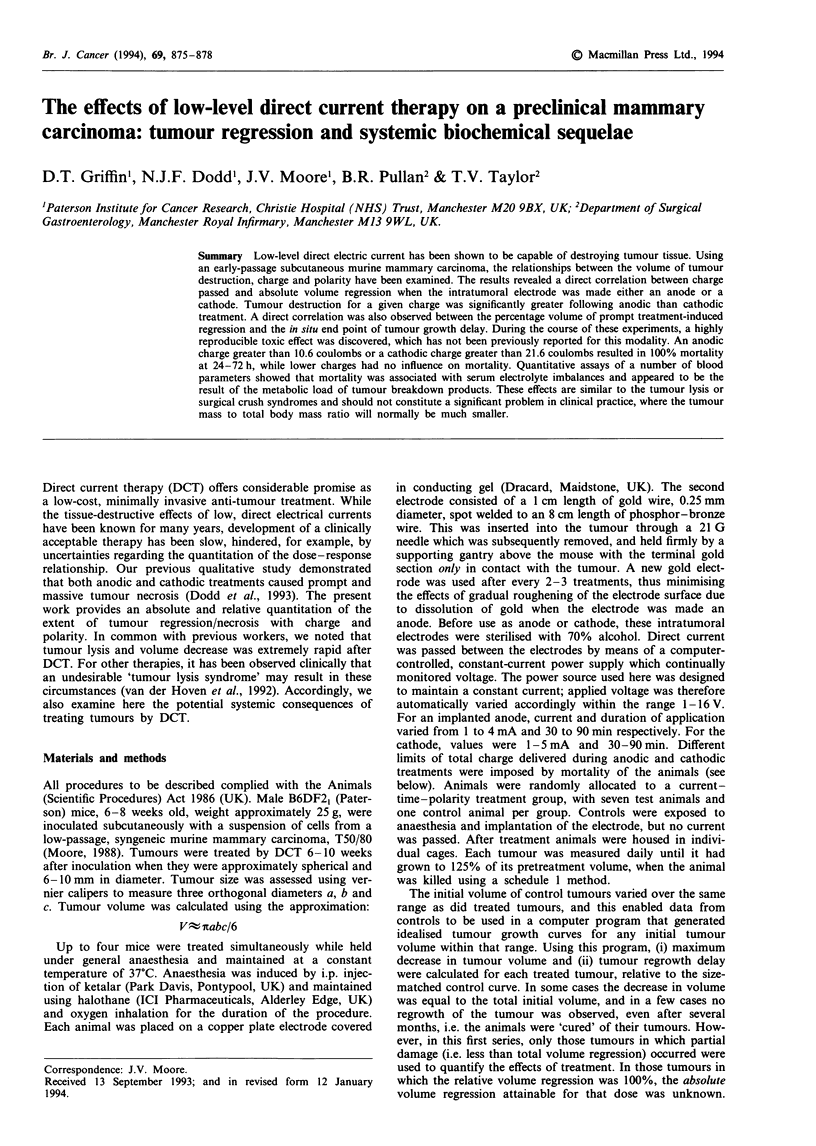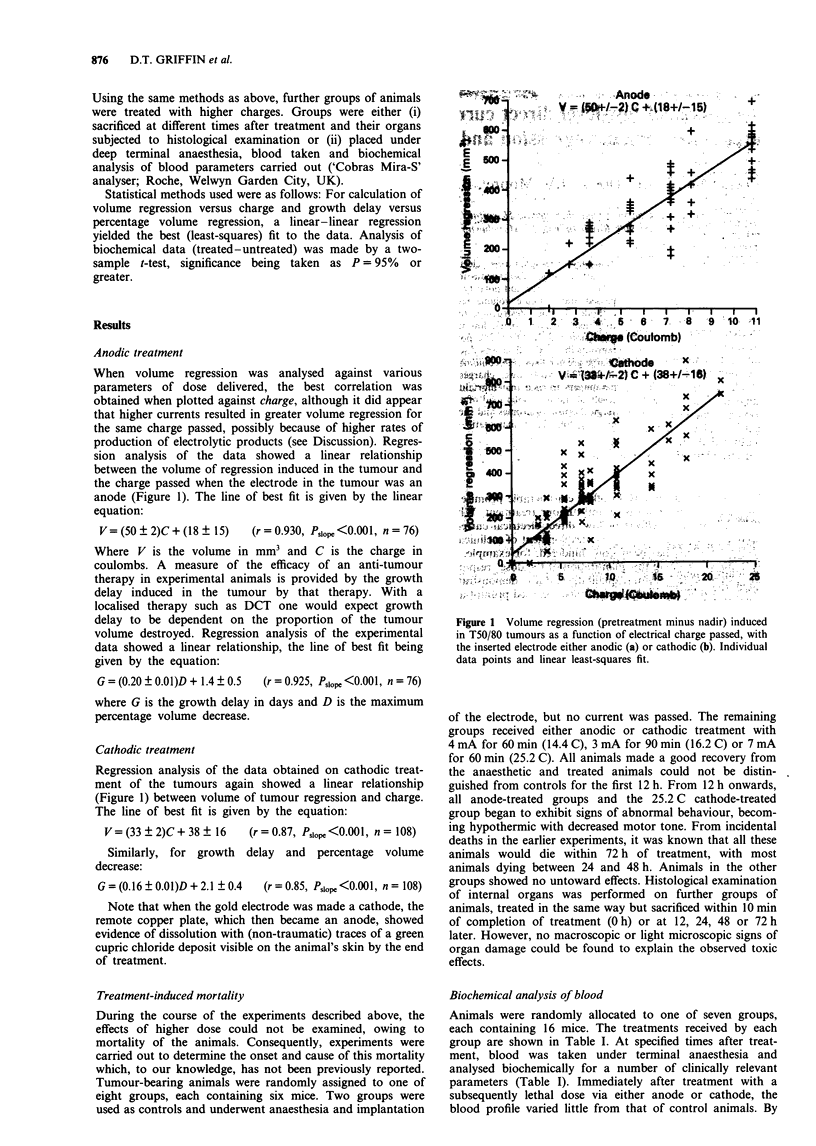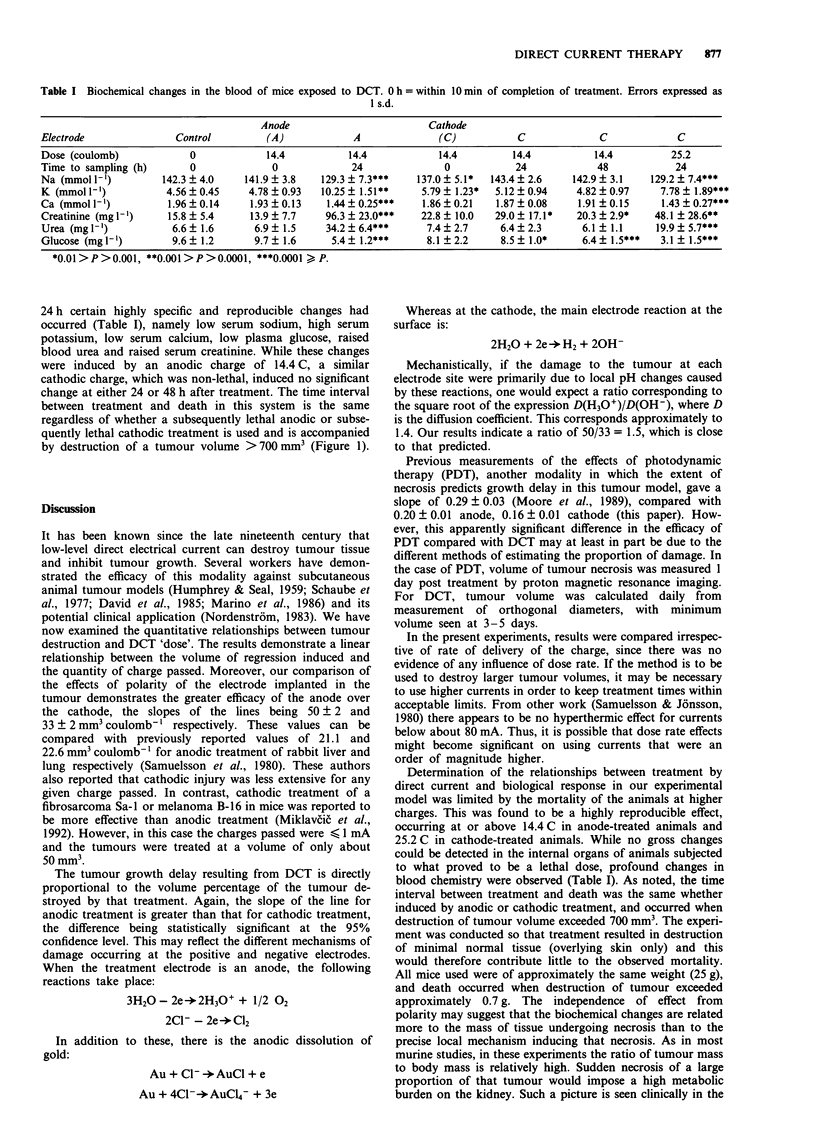Abstract
Low-level direct electric current has been shown to be capable of destroying tumour tissue. Using an early-passage subcutaneous murine mammary carcinoma, the relationships between the volume of tumour destruction, charge and polarity have been examined. The results revealed a direct correlation between charge passed and absolute volume regression when the intratumoral electrode was made either an anode or a cathode. Tumour destruction for a given charge was significantly greater following anodic than cathodic treatment. A direct correlation was also observed between the percentage volume of prompt treatment-induced regression and the in situ end point of tumour growth delay. During the course of these experiments, a highly reproducible toxic effect was discovered, which has not been previously reported for this modality. An anodic charge greater than 10.6 coulombs or a cathodic charge greater than 21.6 coulombs resulted in 100% mortality at 24-72 h, while lower charges had no influence on mortality. Quantitative assays of a number of blood parameters showed that mortality was associated with serum electrolyte imbalances and appeared to be the result of the metabolic load of tumour breakdown products. These effects are similar to the tumour lysis or surgical crush syndromes and should not constitute a significant problem in clinical practice, where the tumour mass to total body mass ratio will normally be much smaller.
Full text
PDF



Selected References
These references are in PubMed. This may not be the complete list of references from this article.
- Better O. S. The crush syndrome revisited (1940-1990). Nephron. 1990;55(2):97–103. doi: 10.1159/000185934. [DOI] [PubMed] [Google Scholar]
- David S. L., Absolom D. R., Smith C. R., Gams J., Herbert M. A. Effect of low level direct current on in vivo tumor growth in hamsters. Cancer Res. 1985 Nov;45(11 Pt 2):5625–5631. [PubMed] [Google Scholar]
- HUMPHREY C. E., SEAL E. H. Biophysical approach toward tumor regression in mice. Science. 1959 Aug 14;130(3372):388–390. doi: 10.1126/science.130.3372.388. [DOI] [PubMed] [Google Scholar]
- Marino A. A., Morris D., Arnold T. Electrical treatment of Lewis lung carcinoma in mice. J Surg Res. 1986 Aug;41(2):198–201. doi: 10.1016/0022-4804(86)90025-9. [DOI] [PubMed] [Google Scholar]
- Moore J. V., Dodd N. J., Wood B. Proton nuclear magnetic resonance imaging as a predictor of the outcome of photodynamic therapy of tumours. Br J Radiol. 1989 Sep;62(741):869–870. doi: 10.1259/0007-1285-62-741-869. [DOI] [PubMed] [Google Scholar]
- Moore J. V. The dynamics of tumor cords in an irradiated mouse mammary carcinoma with a large hypoxic cell component. Jpn J Cancer Res. 1988 Feb;79(2):236–243. doi: 10.1111/j.1349-7006.1988.tb01582.x. [DOI] [PMC free article] [PubMed] [Google Scholar]
- Samuelsson L., Jönsson L. Electrolyte destruction of lung tissue. Electrochemical aspects. Acta Radiol Diagn (Stockh) 1980;21(6):711–714. doi: 10.1177/028418518002100604. [DOI] [PubMed] [Google Scholar]
- Samuelsson L., Olin T., Berg N. O. Electrolytic destruction of lung tissue in the rabbit. Acta Radiol Diagn (Stockh) 1980;21(4):447–454. doi: 10.1177/028418518002100403. [DOI] [PubMed] [Google Scholar]
- Schauble M. K., Habal M. B., Gullick H. D. Inhibition of experimental tumor growth in hamsters by small direct currents. Arch Pathol Lab Med. 1977 Jun;101(6):294–297. [PubMed] [Google Scholar]
- van der Hoven B., Thunnissen P. L., Sizoo W. Tumour lysis syndrome in haematological malignancies. Neth J Med. 1992 Feb;40(1-2):31–35. [PubMed] [Google Scholar]


